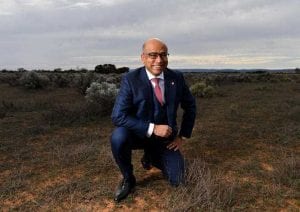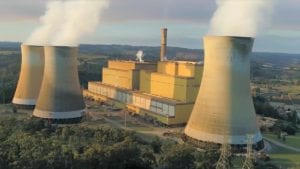Australian energy nerds already know about AEMO’s ‘Integrated System Plan’, or ISP. It is the country’s most advanced modelling exercise examining the least-cost pathway towards a major technological upgrade of the machines that generate electricity in the National Electricity Market (NEM), released every two years. The first was in 2018, and the 2020 report has been in a public draft for some time, with its data consumed hungrily by many energy nerds, myself included (I am probably among the most greedy consumers of their public datasets).
As RenewEconomy has reported today, the newly released final version has some small but fascinating updates from the draft, which you can read about here. It is a constructive and important project. It is, I think, the antithesis of the Australian government’s ‘Technology roadmap‘. That is an as-yet unreleased plan that will purportedly fill the gap left by the absence of a net zero 2050 target. The Technology Roadmap will not target emissions, but it sells itself as a climate plan. The ISP does reduce emissions, but sells itself not as a climate plan, but a cost efficiency exercise. It’s a topsy-turvy sitaution, but has Australian climate politics ever been correctly oriented? I don’t think so.
The ISP shows us how far we’ve come since the wickedly irritating debates of the 2010s; mired in scare tactics around the variability and cost of renewables. It highlights the central reality of climate action in Australia, in 2020: decarbonisation does far more than reduce emissions. It reduces power prices, it democratises power (in the literal and figurative sense), and it brings technology in line with the highly digitised modern world. Here are a few quick reactions and initial highlights from my first read. My hunger for this data is insatiable though – so there will be more to come.
You don’t need fossil gas to decarbonise – but you’ll get if you force it in
The draft 2020 ISP was not kind to gas, with almost every scenario modelled by AEMO (varying with emissions reductions, and how centralised or distributed energy is) featuring little or no fossil gas. This update tunes the language to be slightly more generous towards fossil gas, reiterating the claim that more gas production will be required out into the 2030s as coal comes offline. But these claims come with added uncertainty into the future. Simply, if gas gets cheap, there will be more gas. If batteries get cheap, there will be more batteries. As AEMO say in the report:
“A new policy initiative could aim to significantly reduce gas prices or maintain current low prices well into the future. Such a policy intervention could shift the balance of investments between batteries (or pumped hydro) and new GPG”
The technical detail on grid integration and storage is explored further here on RenewEconomy, but suffice to say, these costs are pivotal for the emissions profile of the NEM – the emissions estimates included in the ISP do not incorporate the very high emissions intensity of mining gas. So it matters – quite a lot – that Australia’s COVID recovery commission has targeted using government powers to artificially reduce gas prices to a very low level as one of their primary goals.
AEMO’s ISP confirms that actions such as the proposals of the COVID19 recovery commission have a material impact on efforts to reduce emissions. They are not fantastical wishlists – this modelling shows that they’re actively dangerous, and could result in increased emissions.
The trilemma never existed – a clean grid is also a reliable and cheap one
Much of the past decade of energy policy in Australia existed on the grounds that renewables were expensive and unreliable, and that therefore, a low emissions grid couldn’t be acheived without a dual price-and-blackout apocalypse – something you can read more about in my upcoming book.
The ISP’s doesn’t target lowest emissions. It targets a lowest-cost replacement of ageing fossil fuel power stations, with a minimum standard for reliability. Like so many modelling exercises before it – going back to Dick Warburton’s tragicomic 2014 RET review – it finds that the cheapest, most reliable way forward is clean:
“Australia’s Paris Agreement target is a 26% reduction in 2005-level emissions by 2030. This target is exceeded in the NEM under all scenarios: see Figure 31. However, beyond 2030, in the Central scenario, this is an outcome of investments made for economic, cost-benefit and risk management reasons, not explicitly for emission reduction”
The transition to a high-renewables grid is – when done well and efficiently – a net benefit:
The transition has momentum, but it needs guide rails
Every scenario in the ISP results in a high penetration of renewable energy. The worst-case scenario still results in 49% wind, solar and hydro by 2040. It’s happening now, and it’s happening fast – within three years’ time, the NEM may see moments at which high renewable output and low demand coincide, resulting in instances in which renewable percentage is in the mid 70% range:
Though there is plenty of momentum in the growth of renewables, how that growth plays out is far from guaranteed. The retirement of fossil fuelled power stations and their replacement with renewables could be smooth, planned and efficient, or it could be incredibly messy. Significant investments in transmission lines and the creation of ‘renewable energy zones’ are targeted as key pathways for smoothing the integration of renewables.
The final paragraph in the entire report is this:
“To implement this roadmap, multiple and well-co-ordinated efforts will be needed to progress DER, VRE, firming capability, transmission development, system security, gas development and market reform. And they will need to start now, given the long lead times for major projects, the scale of reform required, and the imminent end-of-life retirement of significant volumes of coal-fired generation”
There will be plenty more to discuss once the full data sets are released. For now, it’s enough to know that for this sub-component of climate action – reforming energy – change is far more possible than we were led to believe, but also far more sensitive to failure and bad leadership than we’d feared. Time to stop the distractions – like underwriting gas projects -and get on with the hard work of ensuring this transition is as cheap, clean and reliable as possible.
In other words, we have the recipe – time to get cooking.











